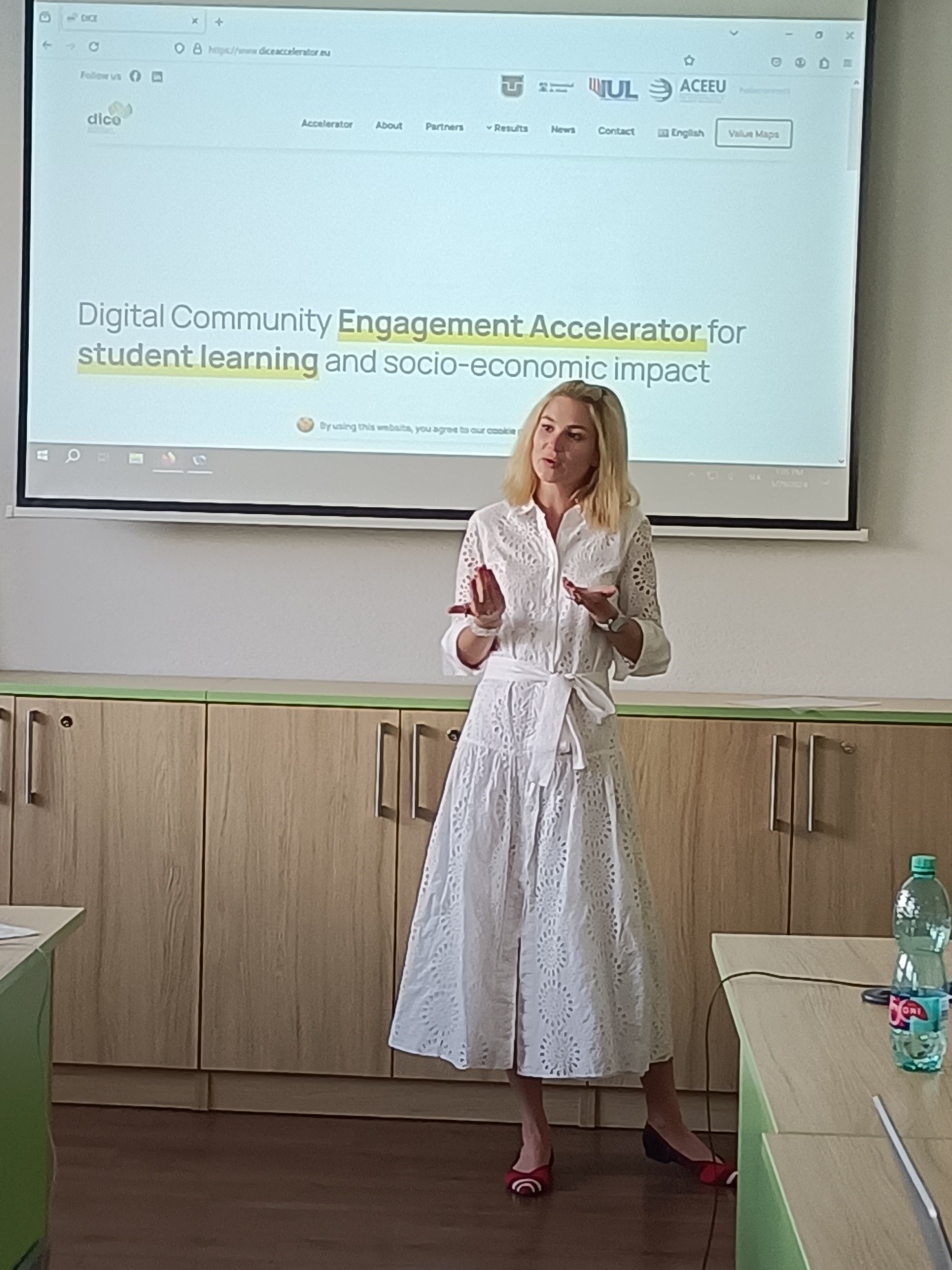The DICE Accelerator is a web-based platform designed to support educators and course directors in creating and enhancing digital community engagement (CE) courses. This innovative tool provides a structured and facilitated approach to developing CE courses aimed at boosting student learning and generating social impact. By guiding educators through every step of the course preparation process, the DICE Accelerator also enhances their entrepreneurial and process management skills.
The DICE acceleration process is based on 6 phases, which have been designed around the ADDIE Model which is a design framework for instructional designers and training developers to develop courses. This approach ensures that all the necessary steps for embedding CE into digital courses are covered. Each phase consists of a series of tools that guide the user’s development journey. In a nutshell, these phases are:
- Value Selection: Instructors start by selecting values based on student or community needs. This step is crucial for maximising the educational and social impact of the course. The values are derived from two key value maps: The Value Map for Student Learning and The Value Map for Social Impact.
- Learning Objectives: This phase involves defining clear, measurable learning objectives to ensure that course content is relevant and achievable.
- Methodology Design: This phase includes selecting course materials, comparing teaching strategies, and integrating best practices for an impactful learning experience.
- Content Development: Instructors develop the course’s core content, including lesson plans and syllabi, with a focus on digital community engagement.
- Assessment: This phase outlines methods for evaluating students‘ knowledge and application through practical, community-based digital activities.
- Feedback and Modification: The final phase involves gathering feedback to refine the course for future iterations and to develop new digital community engagement activities.
As mentioned previously, each phase will have tools to guide the users. Two examples of tools are:
- Value selection (Phase 1): This is a Value Map for Students´ Learning Tool. The user will be presented with 6 questions that will help them identify the drivers that reflect the skills and competencies that they wish to develop in their course.
- Digital Engagement Community Learning Objective Generator (Phase 2): This will help to create learning objectives in your DICE course.
The DICE Accelerator will be launched in July for validation by five experts. This platform represents an important resource so educators can structure and deliver courses that are not only educational but also socially impactful.
Stay updated on the results of our validation process and the launch of this tool!




